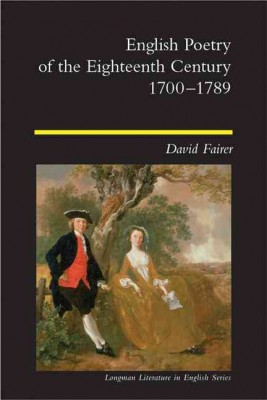| English Poetry of the Eighteenth Century, 1700-1789 Contributor(s): Fairer, David (Author) |
|
 |
ISBN: 0582227771 ISBN-13: 9780582227774 Publisher: Routledge OUR PRICE: $65.50 Product Type: Paperback - Other Formats Published: December 2002 Annotation: In recent years the scope of eighteenth-century poetry has greatly expanded beyond the established canon of Pope, Swift, Gray, Johnson, Goldsmith, Smart and Cowper, to include women poets, labouring-class and provincial poets, and many previously unheard voices. Fairers book takes up the challenge this poses to our traditional understanding of the subject. He seeks to question some of the structures, categories, and labels that have given the age its reassuring shape in literary history. In doing so he offers a fresh and detailed look at a wide range of material. This book sets out to integrate the works of lesser known (even unknown) poets into the bigger picture by engaging them with the established writers. It tests general assumptions by emphasising variety and the individual voice, and by placing poems in their immediate contexts. The result is an eighteenth-century poetic scene that is dynamic, full of human energies, and responsive to all the significant developments of the age. David Fairer is Professor of Eighteenth-Century English Literature at the University of Leeds. He is the author of "The Poetry of Alexander Pope" (1989) and "Popes Imagination "(1984), and co-editor of "'Eighteenth-Century Poetry: An Annotated Anthology' "(Blackwell, 1999). |
| Additional Information |
| BISAC Categories: - Literary Criticism - Poetry |
| Dewey: 821.509 |
| Series: Longman Literature in English |
| Physical Information: 0.76" H x 6.2" W x 9.34" (1.06 lbs) 316 pages |
| Descriptions, Reviews, Etc. |
| Publisher Description: In recent years the canon of eighteenth-century poetry has greatly expanded to include women poets, labouring-class and provincial poets, and many previously unheard voices. Fairer's book takes up the challenge this ought to pose to our traditional understanding of the subject. This book seeks to question some of the structures, categories, and labels that have given the age its reassuring shape in literary history. In doing so Fairer offers a fresh and detailed look at a wide range of material. |